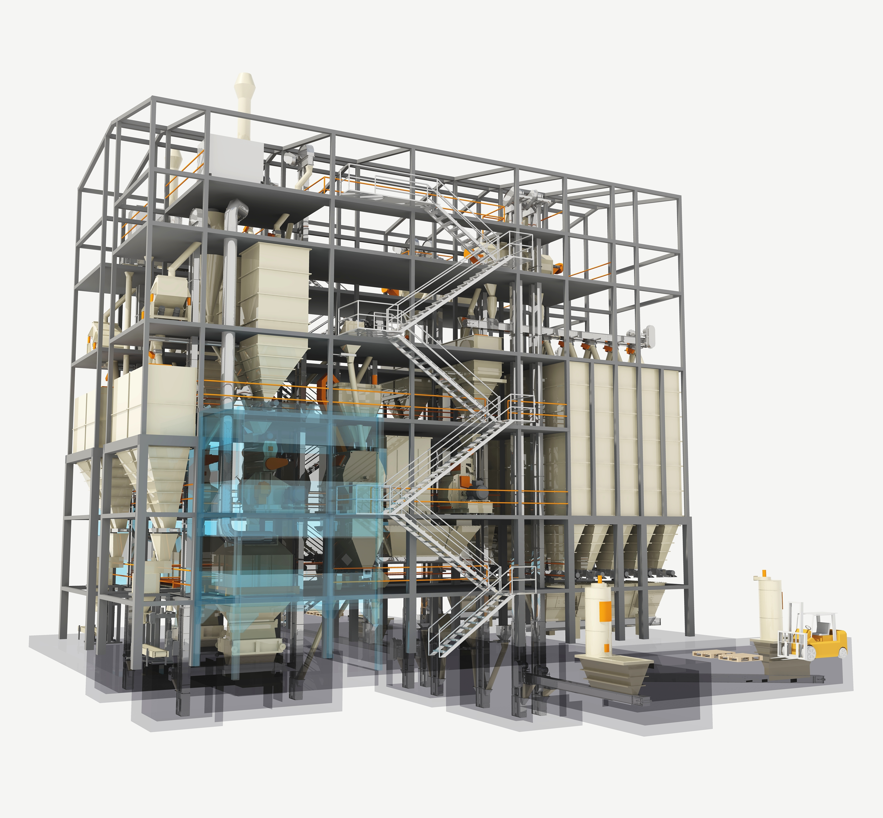Feed mill engineering is a crucial aspect of the livestock and poultry industry. It is responsible for designing, constructing, and optimizing the facilities that produce animal feed. In the Philippines, where agriculture is vital to the economy, the demand for efficient and reliable feed mill operations has never been higher.
Feed mill engineering involves a comprehensive understanding of various components, including feed formulation, ingredient handling, processing equipment, and automation systems. Experts in this field leverage their technical expertise and industry knowledge to create feed mill facilities that are not only productive but also sustainable, energy-efficient, and cost-effective.
Innovations in Feed Mill Technology
The feed mill industry has witnessed a remarkable evolution in recent years, with the integration of cutting-edge technologies and innovative solutions. From automated material handling systems to advanced process control algorithms, these advancements have transformed the way feed mills operate, improving productivity, product quality, and operational efficiency.
One key innovation in feed mill technology is the use of computerized control systems. These systems allow for precise monitoring and adjustment of critical parameters, such as temperature, moisture, and particle size, ensuring consistent product quality and optimal resource utilization. Additionally, the integration of data analytics and predictive maintenance tools has enabled feed mill operators to anticipate and address potential issues before they disrupt production.
Benefits of Investing in Feed Mill Engineering
Investing in feed mill engineering can provide a range of benefits for livestock and poultry producers in the Philippines. By leveraging the expertise of specialized engineers, feed mill operators can:
- Enhance Production Capacity: Optimized facility design and process optimization can increase the feed mill’s overall production capacity, allowing for greater output to meet the growing demand for animal feed.
- Improve Product Quality: Advanced processing technologies and quality control measures can ensure the consistent production of high-quality feed, meeting the nutritional requirements of livestock and poultry.
- Reduce Operating Costs: Efficient energy management, waste reduction, and process automation can lead to significant cost savings, improving the overall profitability of the feed mill operation.
- Ensure Regulatory Compliance: Feed mill engineering can help ensure that the facility meets all relevant safety, environmental, and food safety regulations, mitigating the risk of non-compliance and potential penalties.
- Enhance Sustainability: Incorporating sustainable design principles and energy-efficient technologies can reduce the environmental impact of feed mill operations, contributing to a more sustainable agricultural ecosystem.
Steps to Transforming Feed Mill Facilities
Transforming a feed mill facility in the Philippines involves a methodical approach that addresses both operational and strategic considerations. Here are the key steps in this process:
- Comprehensive Assessment: The first step is to conduct a thorough assessment of the existing feed mill facility, evaluating its current capabilities, infrastructure, and areas for improvement.
- Process Optimization: Based on the assessment, feed mill engineers will identify opportunities to optimize the production processes, improve material handling, and enhance energy efficiency.
- Equipment Upgrades: Outdated or inefficient equipment may be replaced with modern, energy-saving alternatives that can enhance productivity and product quality.
- Automation and Digitalization: Integrating advanced automation systems and digital technologies can streamline operations, improve process control, and enhance data-driven decision-making.
- Facility Redesign: In some cases, a complete redesign of the feed mill facility may be necessary to address layout, workflow, and infrastructure challenges.
- Regulatory Compliance: A critical step in the transformation process is ensuring that the transformed feed mill facility meets all relevant safety, environmental, and food safety regulations.
Challenges in Feed Mill Facilities in the Philippines
While the Philippines has a thriving livestock and poultry industry, feed mill facilities in the country often face unique challenges that can hinder their performance and growth. Some of the key challenges include:
- Aging Infrastructure: Many feed mill facilities in the Philippines are operating with outdated equipment and infrastructure, which can lead to inefficiencies, maintenance issues, and increased operating costs.
- Limited Access to Advanced Technologies: The adoption of cutting-edge feed mill technologies, such as automated material handling and process control systems, has been relatively slow in the Philippines, limiting the potential for productivity gains.
- Regulatory Compliance: Navigating the complex regulatory landscape and ensuring compliance with evolving safety, environmental, and food safety standards can be a significant challenge for feed mill operators.
- Skilled Workforce Shortage: The feed mill industry in the Philippines often faces a shortage of skilled technicians, engineers, and operators, making it difficult to maintain and optimize the facilities effectively.
- Fluctuating Raw Material Prices: Volatility in the prices of key feed ingredients, such as grains and oilseeds, can impact the profitability and competitiveness of feed mill operations.
Finding the Right Feed Mill Engineering Partner
To overcome these challenges and transform feed mill facilities in the Philippines, it is crucial to partner with a reliable and experienced feed mill engineering firm. These specialized firms can provide a comprehensive suite of services, including:
- Facility assessment and optimization
- Process engineering and design
- Equipment selection and integration
- Automation and control system implementation
- Regulatory compliance support
- Training and capacity building for staff
By collaborating with a reputable feed mill engineering partner, feed mill operators in the Philippines can access the latest industry knowledge, cutting-edge technologies, and best practices, ultimately enhancing the performance and sustainability of their facilities.
Final Thoughts:
The future of feed mill engineering in the Philippines is promising as the industry continues to evolve and adapt to meet the growing demands of the livestock and poultry sectors. By embracing innovative technologies, optimizing production processes, and investing in skilled personnel, feed mill operators can position their facilities for long-term success and contribute to the overall growth of the agricultural industry in the Philippines.
Contact our team of experts today to learn more about how feed mill engineering can transform your facility. We’ll work with you to develop a customized solution that addresses your unique challenges and unlocks new opportunities for growth and efficiency.

